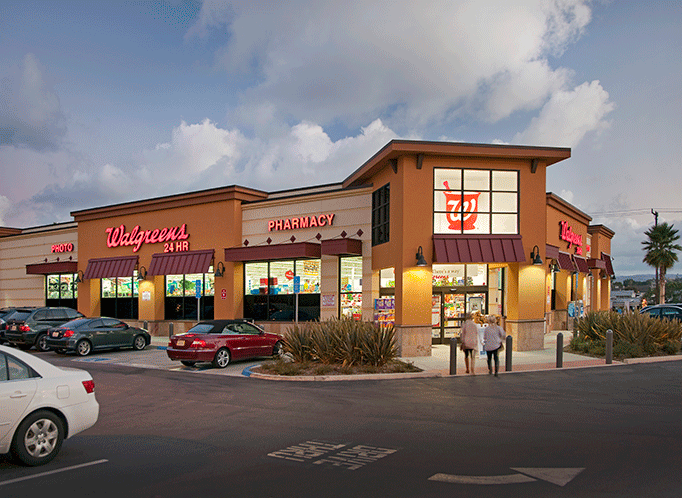
Walgreens says that it is prepared to sell off up to 1,000 stores in order to bring its $17.2 billion bid for Rite Aid to fruition, if that is what is demanded by federal government regulators. Walgreens Boots Alliance Inc. last week placed the bid on Rite Aid, which has 4,600 stores in 31 states plus the District of Columbia. Walgreens has 8,232 U.S. stores in all 50 states. The merger would save about $1 billion through operational synergies, Walgreens says, and would create a combined chain that is larger than CVS. The deal is expected to close in the middle of 2016.
CVS has 7,800 stores, but a market share of 58.1 percent, and is buying Target’s 1,700 units, pending regulators’ approval, notes Garrick Brown, a vice president of research at Cushman & Wakefield. This is a major factor in Walgreens’ decision to go after Rite Aid, he says in a report on the deal released Wednesday.
“The deal makes a lot of sense for both Walgreen’s and Rite Aid,” Brown writes. “It effectively combines the nation’s second- and third- largest drug store chains; Walgreens’ 31 percent market share is followed by Rite Aid’s 10.3 percent.”
The merger would make Walgreens especially dominant in New York and California. In 2010 Walgreens bought Duane Reade for $1.1 billion. While Duane Reade and Rite Aid will continue to operate under their own names, “decisions will be made over time regarding the integration of the two companies, ultimately creating a fully harmonized portfolio of stores and infrastructure,” Walgreens said in a prepared statement.
Cushman’s Brown predicts that the deal could eventually result in a total of 3,000 stores closing because of overlap. “The good news for landlords is that this will almost certainly happen over the course of years, not months,” Brown writes. “I believe that in most cases that Walgreens will seek to close these redundant stores as leases expire or they will strategically look to buy their way out of older leases.”


